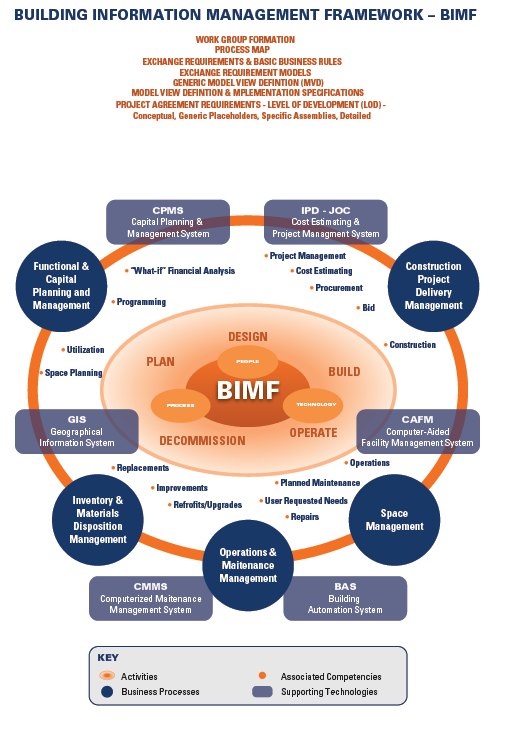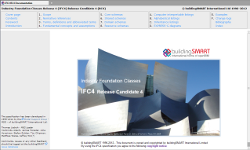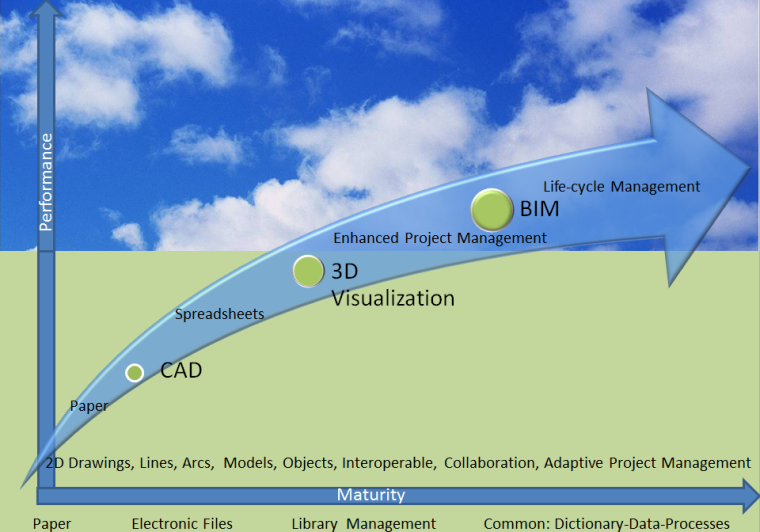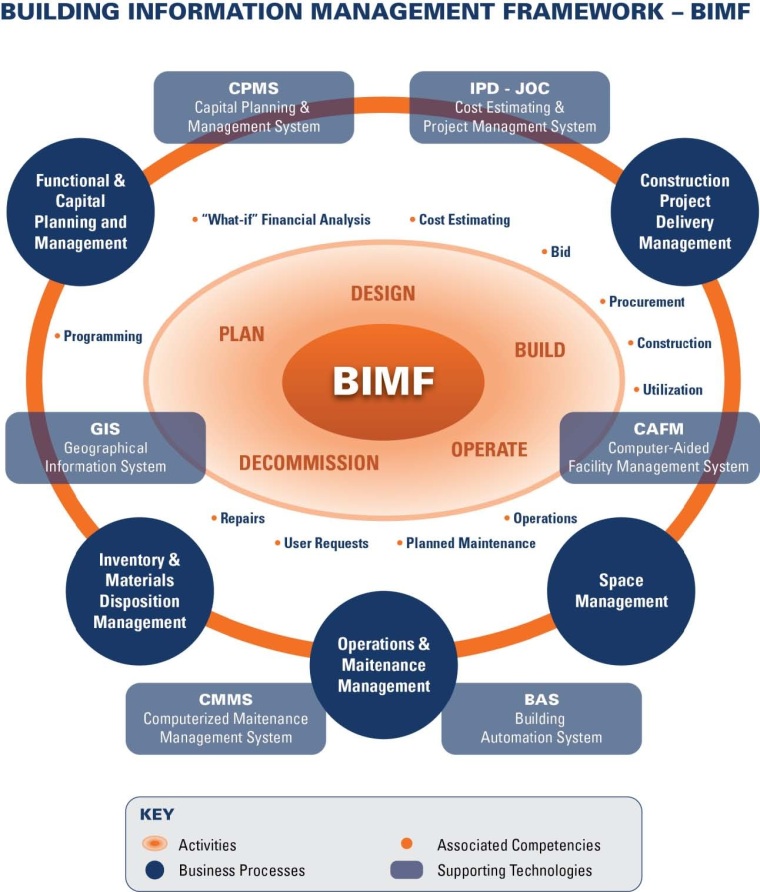BIM is the life-cycle management of the built environment supported by digital technology. It is first and foremost the process of developing and leveraging actionable information (standardized, accurate, transparent) to efficiently manage the total cost of ownership and functional requirements of a built asset (building, infrastructure, etc.).
BIM is NOT rocket science, it is not 3D pretty pictures, it is not all about technology. BIM first and foremost about early and ongoing collaboration, continuous improvement, and robust life-cycle management process supported with integrated technology and standardized information.
Collaboration construction delivery methods such as Integrated Project Delivery for major new construction, and Job Order Contracting for renovation, repair, sustainability, and minor new construction are important, if not requisite, components of BIM. Equally important from an Owners perspective is the integration of multiple competencies, business processes, and technologies such as capital planning and management (CPMS) for capital reinvestment strategy, computerized maintenance management (CMMS) for “movable” asset inventory and routine/preventative maintenance, computer aided facility management (CAFM) for space mangement, building automation (BAS) for security/energy, and geographical information (GIS) for rapid locationing. Forget “integrated workplace management systems” (IWMS), they are attempts at BIM by single vendors. As one might expect, no single company can be expected to be competent across all knowledge domains and practices. Through the use of standardized informatoin exchanges, “best in class” technologies will finally be easily integrated as “plug-ins” to a users cloud-based technology platform.
The day is here…. you can wake up or go back to bed…your choice.
Key additional items/areas to consider:
COBie – Construction Operations Building Information Exchange – Organisation and structuring of information. This is information that is essential not only to the design and construction of a built asset, but also its operation and maintenance. Currently focused upon delivering FM information at handover, but rapidly expanding.
OMNICLASS – A standardized information classification system for the built environment. An integration and expansion of UNIFORMAT, MASTERFORMAT, etc.to incorporate all buildings spaces, equipment, processes, technologies, etc.
Standard Cost Data – Most notable example is RSMeans. Well researched cost data (material, equipment, labor) and associate construction / facility management sq. ft., assembly, and unit cost information and associated task listings. Critical for use to “benchmark” and/or “confirm” local processes/projects. Also standardized using Masterformat.
Job Order Contracting – Collaborative construction delivery method using a standardized unit price book (UPB) based upon RSMeans and/or customized cost information. Cost are best update annually or quarterly. Process has been embedded within software to enable cost effective and consistent deployment. Reducing procurement costs, mitigates change orders, and virtually eliminates legal disputes.
Integrated Project Delivery – Similar to JOC, however best suited for major new construction only.
via http://www.4Clicks.com – Premier cost estimating and efficient project delivery software solutions for JOC, SABER, IDIQ, MATOC, SATOC, MACC, POCA, BOA, BOS … featuring an exclusively enhanced 400,000 line item RSMeans Cost Database, visual estimating/automatic quantity take off ( QTO), and collaborative contract/project/document management, all in one application. Our technology is currently serving over 85% of United States Air Force bases and rapidly growing numbers of other DOD and non-DOD (United States Army Corps of Engineers, Army, GSA, Homeland Security, VA..) federal departments/agencies, as well as state/county/local governments, colleges/universities, healthcare, and airports/transportation. RSMeans Strategic Partner









